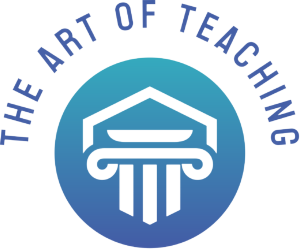
Mastering the Role of a Setter Closer in Sales
The Growing Importance of a Setter Closer in Modern Sales
The sales industry has evolved dramatically, especially with the rise of digital platforms and global competition. Businesses now realize that a single salesperson handling everything from prospecting to closing can lead to inefficiencies. This is where the role of a setter closer comes into play. A setter is responsible for finding and qualifying leads, while the closer focuses on sealing the deal with prospects who are already prepped and interested. By separating these responsibilities, companies can increase their closing rates while maintaining a steady flow of potential clients. The setter closer structure has become increasingly popular in industries like coaching, real estate, and software because it allows for specialization. More organizations are embracing this model because it streamlines the customer journey and enhances overall performance.
Breaking Down the Responsibilities of a Setter
A setter plays one of the most crucial roles in any sales cycle because they are the first point of contact for potential clients. Their job is not just to gather names and numbers but to qualify leads effectively. This involves asking the right questions, identifying whether the prospect has the budget, authority, and genuine interest, and ensuring they are a good fit for the offer. Setters also handle cold outreach, warm follow-ups, and pre-framing conversations so that prospects are more receptive when they finally speak to the closer. This process saves the closer a great deal of time and ensures they are only working with high-quality prospects. Setters rely heavily on tools like CRMs, email platforms, and LinkedIn to maximize efficiency and reach. Without setters, closers would spend countless hours chasing unqualified leads, reducing their ability to focus on actual sales. A strong setter is therefore a vital asset in any high-performance sales team.
The Role of a Closer in the Sales Process
While setters initiate the relationship, the closer steps in to transform that initial interest into a signed agreement or purchase. A closer must be skilled in understanding human psychology and recognizing the emotional and logical triggers that influence buying decisions. Unlike the setter, who casts a wide net, the closer narrows the focus to one-on-one conversations that matter most. They guide the client through objections, highlight the value of the offer, and create urgency without being pushy. Closers are often highly persuasive, confident, and trained in advanced negotiation techniques. Their ability to listen actively and respond effectively can make or break a deal. In many industries, closers are the highest-paid members of the sales team because their impact directly affects company revenue. For anyone aspiring to climb the sales ladder, mastering the closer role is often the ultimate goal.
How the Setter Closer Dynamic Works Together
The beauty of the setter closer model is the seamless collaboration between the two roles. A setter warms up the lead, handles initial objections, and ensures the prospect is ready for a deeper sales conversation. Once this groundwork is done, the closer can step in with a more personalized pitch that addresses the client’s exact needs and pain points. This division of labor reduces wasted effort and maximizes efficiency. Communication between setters and closers is essential, as any misalignment can result in lost opportunities. Industries such as coaching, SaaS, financial services, and real estate thrive with this setup because of the higher value of their products and services. When both roles operate in harmony, companies often notice shorter sales cycles and higher closing percentages. This teamwork transforms the sales process from a solo effort into a coordinated system that scales effectively.
Skills Every Effective Setter Closer Should Develop
Success in this field requires a strong set of skills that go beyond basic sales techniques. First, active listening is critical because both setters and closers must understand the true needs of prospects. Building rapport quickly also determines whether conversations move forward or stall. Persuasion is another must-have skill, especially when encouraging prospects to stay engaged in the process. Time management is equally vital because both roles involve balancing multiple conversations and keeping the pipeline organized. Adaptability is another key because different industries and clients require tailored approaches. For example, what works in real estate may not resonate with software clients. By mastering these skills, a setter closer becomes far more effective and increases their value to employers and clients alike. These qualities transform ordinary salespeople into professionals capable of generating consistent results.
Career Opportunities as a Setter Closer
The demand for setter closers is rising, particularly in industries that rely heavily on remote sales teams. Many companies prefer this structure because it allows them to scale quickly without overloading a single salesperson. The career path is attractive for those seeking entry into high-income roles since one can start as a setter and gradually advance into a closer position. Salary expectations vary, but experienced closers often earn commissions that rival six-figure incomes, especially in high-ticket industries. For setters, earnings are lower but still competitive, making it a great starting point for those new to sales. Remote work has also made these roles more flexible, with companies hiring globally rather than locally. For ambitious professionals, the setter closer path offers a ladder of progression from entry-level to leadership positions like sales manager or director of sales. The growth opportunities are nearly endless for those committed to mastering their craft.
Common Challenges Setter Closers Face and How to Overcome Them
Like any career path, working as a setter closer comes with its share of challenges. Handling rejection is one of the most common hurdles, as not every prospect will be ready or willing to engage. Burnout is another issue, particularly for setters who deal with a high volume of outreach daily. Closers, on the other hand, often face the challenge of overcoming objections without damaging rapport or appearing pushy. Staying motivated in the face of constant ups and downs requires resilience and strong self-discipline. Many professionals also struggle with competition in saturated industries, which makes standing out more difficult. However, continuous learning, mentorship, and practicing proven sales frameworks can help overcome these challenges. By developing a strong mindset and refining their strategies, setter closers can thrive even in demanding environments.
How Businesses Benefit From Hiring a Setter Closer
For companies, hiring a setter closer is not just a staffing decision but a strategic move. Businesses see higher conversion rates because setters ensure only the most qualified leads make it to the closers. This reduces wasted time and increases efficiency across the board. Revenue growth also becomes more predictable, as each stage of the sales funnel is managed by specialized professionals. Beyond numbers, the customer experience improves because prospects feel heard and guided instead of being rushed into a decision. Many organizations also find it more cost-effective to divide responsibilities, as it reduces turnover and creates clear career progression paths. Industries with high-ticket products especially benefit from this approach since every conversation matters. Ultimately, companies that adopt this model often outperform those relying on traditional sales structures.
Tools and Technology That Boost Setter Closer Performance
Technology plays a major role in helping setters and closers perform at their best. CRM systems such as HubSpot or Salesforce track every lead and ensure no opportunity slips through the cracks. Automation tools for email, scheduling, and outreach reduce repetitive tasks, allowing setters to focus on meaningful conversations. Communication platforms like Slack and Zoom keep teams aligned and responsive. Analytics dashboards also provide insights into performance metrics such as call-to-appointment ratios and close rates. These tools make it possible to scale operations while maintaining a personalized approach. As sales continue to evolve, professionals who leverage technology effectively will have a significant edge. Investing in the right software not only boosts efficiency but also provides valuable data that informs smarter decision-making.
FAQ Section
What is the difference between a setter and a closer?
A setter focuses on generating and qualifying leads, while a closer is responsible for converting those leads into paying clients.
Can one person handle both roles effectively?
While possible, it often reduces efficiency. Specializing usually leads to better results for both the salesperson and the company.
How much can a setter closer earn?
Earnings vary by industry and experience, but closers can often reach six-figure incomes, while setters earn less but still enjoy competitive pay.
What industries need setter closers the most?
Industries like coaching, consulting, SaaS, real estate, and financial services often rely heavily on this structure.
Is prior sales experience required to become a setter closer?
No, many people start as setters with little to no sales background and progress into closers with training and practice.
Takeaway
The setter closer model is reshaping the sales world by creating a more efficient and profitable structure for businesses and career opportunities for professionals. For companies, it means higher conversions and happier clients. For aspiring salespeople, it offers a clear pathway from entry-level roles to high-income positions. By mastering the skills, leveraging the right tools, and embracing the collaborative nature of the role, anyone can thrive as a setter closer in today’s competitive marketplace.


